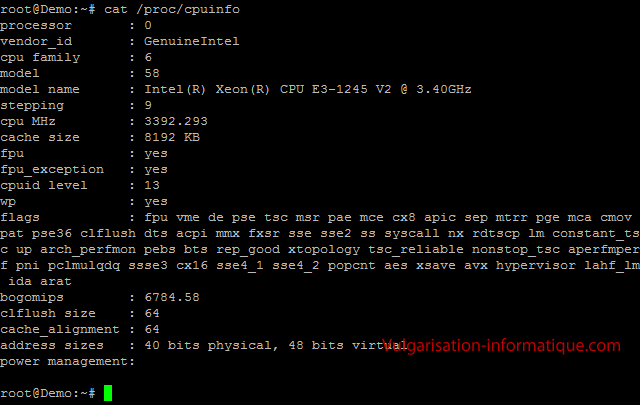
echo'vhv.allow 'TRUE''>/etc/vmware/config You can now enable VHV on a per VM basis and using the Web Client which basically adds the vhv.enable 'true'parameter to the VM’s. processor : 0 vendorid : GenuineIntel cpu family : 15 model : 2 model name : Intel (R) Xeon (TM) CPU 2.40GHz stepping : 7 cpu MHz : 2392. Last edited by howefield July 21st, 2014 at 11:26 AM. To enable ESXi nested virtualization use next command that added the vhv.allow parameter to the configuration file. You then typically have command line tools installed in your base OS (Windows or MacOS) that allow seamless management of the Docker containers in the Docker VM.Model name : Intel(R) Core(TM) i5-3470 CPU 3.20GHzįlags : fpu de tsc msr pae mce cx8 apic mca cmov pat clflush acpi mmx fxsr sse sse2 ss ht nx constant_tsc nonstop_tsc pni pclmulqdq est ssse3 sse4_1 sse4_2 popcnt tsc_deadline_timer aes f16c rdrand hypervisor ida arat epb pln pts dtherm fsgsbase ermsĪddress sizes : 36 bits physical, 48 bits virtual The output is similar to: vmware -v VMware ESX Server 3i 3.5. You can also determine this information using the command vim-cmd hostsvc/hosthardware. However, this file does not exist on ESXi hosts. check the cpu number with command cat /proc/cpuinfo in terminal. On an ESX host, you can check cpuinfo by looking at the flags line in the /proc/cpuinfo file. They don’t have a native Linux environment, so they have to run a Linux virtual machine that runs the Docker engine. hot-add CPU cause VM with ubuntu-16.04.4-desktop-64bit hang in ESXi. etc At least on Ubuntu/Debian, the /proc/cpuinfo has a separate entry for each CPU core 2020. With additional virtualization level of hypervisor there are now three (or four) memory levels: virtual memory of app in guest OS, some memory which is considered as physical by guest OS (it is the memory managed by virtualization solution: ESXi, Xen, KVM.
ESXI PROC CPUINFO WINDOWS
Now, this gets a bit tricky when you’re talking about Docker in Windows or MacOS. Logical processors are As per CPU proccessing with VMware. Which means if that what you have happily running on your hardware without hw virtualization support, it will be plenty enough for Docker. In Windows, this is available in the System Control Panel. There isnt a top command or /proc/stat file. If Linux, dmidecode and cat /proc/cpuinfo will display some of the host CPU specification.

However, I cant find a command for CPU usage. I was able to view the memory usage using the command- vsish -e get /memory/comprehensive.
ESXI PROC CPUINFO UPDATE
Docker needs a 64-bit Linux OS running a modern enough kernel to operate properly. I am trying to get total CPU usage of the servers running the VMware ESXi 6.7.0 Update 3 to monitor performance. Linux namespaces are provided and supported by Linux kernel to allow separation (virtualization) of process ID space (PID numbers), network interfaces, interprocess communication (IPC), mount points and kernel information.Ĭontrol groups in Linux allow accurate resource control: using control groups allows Docker to limit CPU or memory usage for each container. Instead, it leverages Linux functionality: namespaces and control groups. The key difference from KVM or VMware virtualization is that Docker is not using hardware virtualization. Docker containers allow you to run processes in isolation from each other and from the base OS – you decide and specify if you want base system to share any resources (IP addresses, TCP ports, directories with files) with any of the containers. No /proc/cpuinfo Hello, i installed ESX4i on a machine with an Intel E5310 (seecpuinfo. For example, a dual-core processor with hyperthreading activated has two cores. Note: In hyperthreaded systems, each hardware thread is a logical processor. Under Hardware, expand CPU to view the information about the number and type of physical processors and the number of logical processors. In a sense of allowing you to run multiple independent environments on the same physical host, yes. Browse to the host in the vSphere Client.



This is a quick post to explain that by default Docker does not need hardware virtualization (VT-X).


 0 kommentar(er)
0 kommentar(er)
